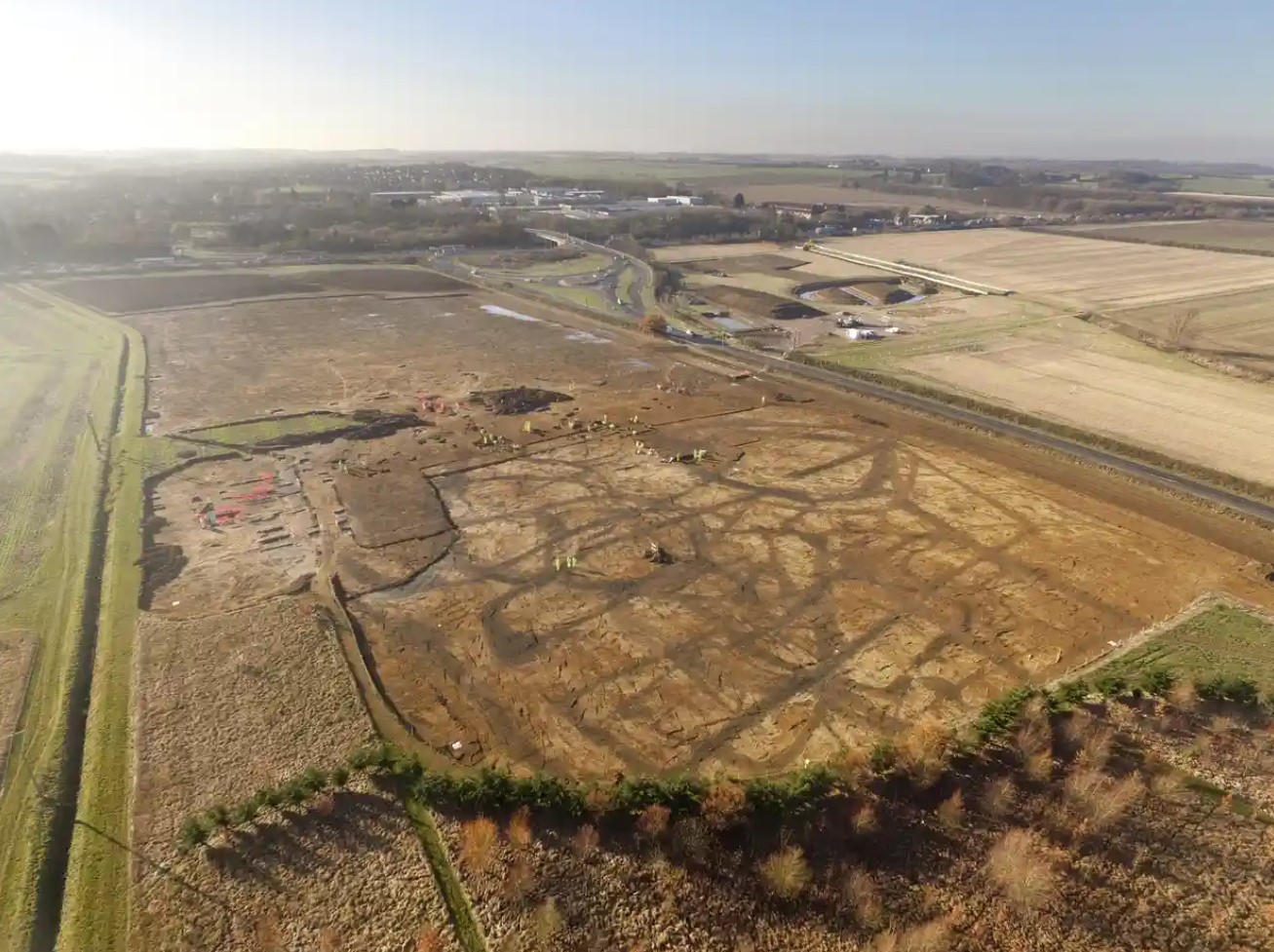Já bych to neviděl tak fantasticky, za chatrčemi zdechly z nějakého důvodu žáby, a aby to nezavánělo nahazeli je do jámy, pro obyvatele několika chatrčí práce na chvíli.... Nepočítám kopání díry 
The mystery of the Iron Age frog mass grave
Categories: Nálezy nejenom s detektorem ve Velké Británii a Irsku
More than 8,000 frog skeletal remains have been discovered by archaeologists near Cambridge in the UK, lying in a 14-metre-long trench near a roundhouse in an Iron Age settlement. Frog bones are occasionally discovered individually at archaeological sites, but a mass frog "burial" is unprecedented.
The discovery was made by the Museum of London Archaeology during excavations on the upgraded infrastructure of the A14 from Cambridge to Huntingdon. The frogs were found about a metre below the surface. It was not a typical waste pit, with only small domestic waste, mainly pottery shards, found in the trench. The bones were mostly from the common frog and common toad, species that were and still are widely distributed throughout Europe.
Archaeologists say that although there is evidence of Stone Age consumption of these amphibians, these bones bear no traces of processing or baking. But if the frogs were cooked, no traces may have survived. Senior ancient animal bone specialist Dr Vicki Ewens said: 'In my experience, particularly at sites from London, so many frogs have not been found anywhere. To have so many bones coming from one trench is really extraordinary. In my research I have only found two Saxon sites with a single bone at each. It was a frog that had only been found in East Anglia, and which became extinct in the wild in the 1990s. But it has recently been reintroduced."
Evidence of charred grain found near the house suggests its occupants processed crops that may have attracted pests such as beetles and aphids, which frogs eat. Other possible explanations include the "tragedy of the prehistoric frog". Frogs move in large numbers in search of breeding pools. They could have fallen into the ditch and become trapped. Another hypothesis is that the unusual number of victims may also have been caused by winter hardship. Overwintering frogs may hide in the mud, but extreme cold can kill them. Perhaps they were victims of a particularly harsh winter.
The roundhouse was used in the late Iron Age, but it is not clear when exactly in this period the frogs were put in the ground. It could also have been a long-term process. Amphibian bones were among a huge number of finds, ranging from various kinds of artefacts to human remains. They were found during approximately 40 excavations that took place between 2016 and 2018 over an area of 234 hectares. Although the excavations have now ended, analysis of the recovered artefacts continues.
Roman Němec
Sources: theguardian.com, observer

Zooarchaeologist Vicki Ewens analyses frog bones

An aerial view of the archaeological site excavated at Bar Hil
The article is included in categories:
- Archive of articles > Archaeology > Finds and rescue research abroad > Nálezy nejenom s detektorem ve Velké Británii a Irsku
Post
Zajímavá žabí tragédie 👍👍
V sousední vsi taky žabáci páchají každoročně rituální sebevraždu. Nenápadný 50m úsek u cesty.







